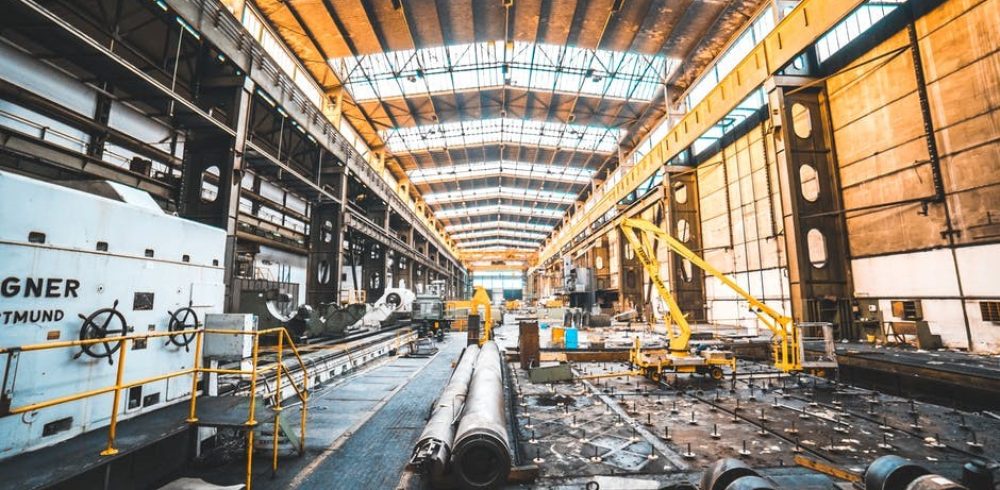The manufacturing industry is booming, but the increase in production and processes can certainly take their toll on the environment. Barry Crackett is a product designer at the industrial, agricultural, and municipal brushware company Brushtec. The brand is consistently working to make their processes greener, and here he will be sharing his top five tips for making your manufacturing operations more eco-friendly.
With recent figures showing that the value of UK manufacturers’ product sales increased by 4.1% between 2016 and 2017, it’s clear that the sector is certainly thriving (Office of National Statistics). And, while that’s great news for all manufacturing and production businesses, this doesn’t come without an environmental impact
Whether you manufacture chemicals, food, or anything else, your processes are bound to emit some harmful greenhouse gases, as well as use up a lot of energy. So, with this and the expansion of the industry in mind, it’s clear that we all need to be taking measures to make our processes more eco-friendly. Here, I will be sharing my top tips for reducing your environmental impact while still allowing your business to progress.
Carry out an energy audit
Before you begin making any changes, you should carry out an energy audit so you can see how much energy you’re using both overall and on each step of the manufacturing process to identify where you could be using less. These audits can be done by yourself or you can hire a professional to ensure you don’t miss any important observations. These usually include monitoring production lines, machinery, lighting, and anything else that is guilty of guzzling excess energy and harming the environment along the way.
In some cases, you might even be legally obligated to carry out a survey — the government’s Energy Savings Opportunity Scheme makes it mandatory for UK companies that employ 250+ people, have an annual turnover of over £38,937,777, and an annual balance sheet totalling over £33,486,489. Once you’ve calculated your energy consumption and identified specific areas of overuse, you’ll then need to appoint a lead assessor within your team to carry out and review your energy audits, as well as complete an ESOS assessment — but, be aware that whoever you pick must be a member of an approved professional body register.
Switch to energy-saving solutions
Once you’ve carried out your energy audit and identified the problem areas of your processes, you can then begin implementing energy-saving solutions. As a switch to eco-friendly machinery and equipment may be costly, you can kick-start a change by making smaller, more basic changes.
I recommend taking a look at your lightbulbs and seeing whether they can be switched for environmentally-friendly options like newer LED models. You could also improve your heating efficiency by updating your insulation and using draught excluders, as well as investing in smart thermostats that will turn themselves on and off to help you conserve energy.
Recycle and reuse materials
While it might be hazardous to reuse certain items, such as chemical containers, there are bound to be plenty of other things you can recycle within the workplace. The likes of packaging your supplier sends things in, as well as empty bottles and scrap paper can all be recycled to reduce the amount of waste your company sends to landfill. Not only will this ensure you’re operating more responsibly, but becoming more eco-friendly can also help you to target more environmentally-conscious companies and customers, which should welcome in more business.
You should also be looking at your processes and reviewing these to see if there is anything you can omit or lessen in your manufacturing processes. This could include using recycled plastics, paper, or glass for your packaging and in the manufacturing of your products. It might also be a good idea to invest in a recycling machine that will allow you to deal with these things on site — cutting down on the need for more polluting lorries to take your recycling away will help to minimise your company’s carbon footprint.
Save water
Many of us take our water supply for granted, meaning it can often be used in excess. But you should be monitoring the way you treat, use, and dispose of water to save you money and lessen your environmental impact.
Calling in a professional to carry out a water audit can show you where you are using most of your water and how you can save on this. They will come up with effective strategies that you can follow to reduce the amount of water you use, which will be kinder to the environment as well as shaving plenty off your water bill: it’s a win-win!
Partner with eco-friendly companies
Many manufacturing companies will rely on other businesses in one way or another but, when your supplier has the same eco-friendly visions and goals as you, it’s bound to have a positive effect on your overall environmental impact.
In some cases, this may require you to change suppliers to find ones that are producing eco-friendly solutions and focusing on promoting sustainability in their own processes. Many power suppliers will also offer green energy packs that will ensure you’re making the most of renewable energy and protecting the planet without minimising productivity or efficiency within your manufacturing processes.
We all want our businesses to thrive, but this doesn’t have to be at the cost of our planet. With my top five tips and some initiative, you can take steps to reduce your environmental impact and still keep your manufacturing business running smoothly.















